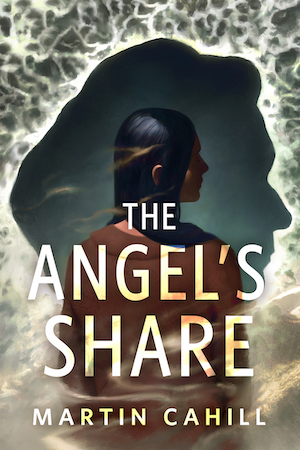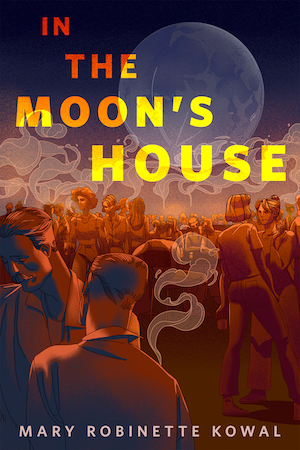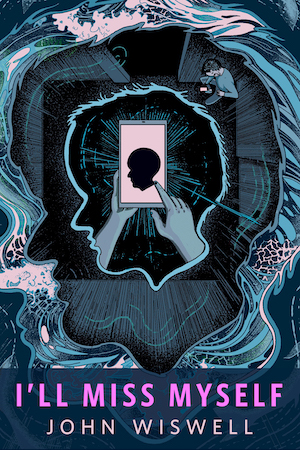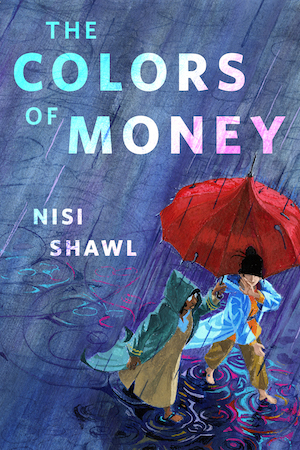Anthony Doerr’s new novel, Cloud Cuckoo Land, has arrived at last, preceded by every form of publicity and marketing that a Big Five publisher can bring to bear. As befits the first novel in a half a dozen years from a critically acclaimed and bestselling writer, there are full-page newspaper ads, website banners, in-store posters and displays, flyers slipped into Barnes & Noble packages, and announcements from Bookshop.org. And of course there’s a book tour. Doerr’s novel deserves all the attention and acclaim, and yet it’s somewhat strange to see the promotional campaign after reading this novel, because Cloud Cuckoo Land is a book about the transformative effect of a forgotten book.
Cloud Cuckoo Land by Antonius Diogenes is not a real book in our world, and it barely exists in the world of Cloud Cuckoo Land, the novel by Anthony Doerr. The Greek tale was likely short to begin with, and it only survives in a single copy, one warped by age, scarred by mold, and battered by history. It’s the story of a foolish man, Aethon, transformed by turns into a donkey, a fish, and a crow; of a fool forever in pursuit of a paradise in the clouds that likely doesn’t exist. Much of the text is missing, but the story is intact, and that story manages to connect five main characters across seven centuries. Antonius is said to have written his epic comedy to console a dying niece; his book seems to retain some beneficent power down the years. In each of the three eras in which the story takes place, the protagonists find themselves somehow saved or changed by their encounter with Antonius’s near-forgotten book.
In Constantinople, just before a teetering Byzantine Empire finally collapses, Anna, an orphan, lives with her sister in the house of Kalaphates, a weaver who supplies vestments to the city’s clerics. She’s an incompetent embroiderer, but her elder sister Maria more than earns both sisters’ keep. A chance meeting with an ailing scholar leads to an unlikely education. But can her knowledge save her from her likely role as one of history’s victims? As the narrator tells us, “by the time she turns thirteen, every person she knows will be either enslaved or dead.”
Omeir, roughly the same age as Anna, is a shepherd in Ottoman Bulgaria. He is seemingly marked from birth for a malign destiny: His father drowns on the night that Omeir is born, and the people of Omeir’s village tremble to see the infant’s cleft palate. Omeir’s grandfather determines to expose the unlucky child to the elements, but proves too good a man to kill his grandson. Omeir and his relatives are driven from the village. The boy enjoys a peaceful, if solitary, life with his mother, his sister, his grandfather, and his beloved twin oxen, until the sultan’s army conscripts boy and beasts into the war against Constantinople. He witnesses splendors and wonders, but also unbearable suffering. His face makes him an outcast; the war makes him expendable.
Zeno has spent most of his life alone in Lakeport, Idaho. He’s a gay man who devotes much of his life to caring for his late father’s partner, a pious lush with a collection of Hummel figurines. His great lost love was a British classicist that he met in a POW camp after being captured by Chinese forces during the Korean War. On February 20, 2020, just a few weeks before the coronavirus locks down the world, the octogenarian is in the town library with five children who are rehearsing a play based on the ancient Greek story that he has related to them.
The rehearsal is violently interrupted by the arrival of Seymour, who is seventeen, angry, confused, and armed with a pistol and a pressure cooker bomb.
Finally, there is Konstance, fourteen years old, who has spent all her life aboard the generation ship Argos, traveling from Earth to the planet BetaOph2 at the rate of seven million miles per hour. When we first meet her, she is alone in a small room at the center of the ship, with only Sybil, the vessel’s chiding artificial intelligence, for companionship. She has spent nearly a year alone in this room, for reasons we only gradually learn, but she has an escape, of sorts, through a virtual reality portal. She has fond memories of her father’s story of the Greek Aethon and his search for Cloud Cuckoo Land, and her hunt for the origins of her childhood bedtime story may lead her to a hidden truth.
The structure of Cloud Cuckoo Land is enormously complicated but never confusing. Doerr leaps from century to century, from cliffhanger to cliffhanger, and from Earth to space with apparent ease. Its characters clamber up monastery walls in the dark, survive horrific privations in the frozen north of China, endure months-long sieges, and escape plagues. They cross the breadth of Europe and travel the depths of space. And somehow, amidst all this action and plot, there is space for reflection, about communication and translation, about the purpose and necessity of stories, about the possibility of redemption.
Buy the Book
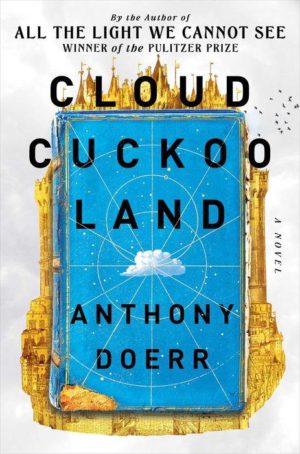

Cloud Cuckoo Land
When Doerr’s previous novel, All the Light We Cannot See, won its Pulitzer in 2015, some critics thought the book, an epic of star-crossed love set against World War II, was a little too “popular” or “middlebrow” or “sentimental.” Similar complaints will, doubtless, be levied against Cloud Cuckoo Land: that it’s too sincere in its celebration of books and stories, too enthusiastic in its reverence for librarians and love for archives, too earnest in its concern for the environment and too optimistic in its faith in the future. Worse still, all the protagonists, even Seymour with his bomb and his gun and his confused ideas, are endearing and, yes, “relatable.” If I were slightly more cynical, I might be the person making those complaints, but Cloud Cuckoo Land won me over entirely. Its six hundred pages flew by in just three or four sittings; I was left rapt and spellbound. Toward the end, I blinked away a tear or three.
In the threatened library in 2020 Lakeport, the children who are meant to be rehearsing the play on the library’s second floor find themselves huddled behind an impromptu barricade. Just before Zeno walks downstairs to confront Seymour, he marvels at the children still whispering to each other about their play and its ending. They are “trying to use the story to slip the trap,” as Anna did after the Fall of Constantinople and Konstance will do alone on the Argos. In Cloud Cuckoo Land, Anthony Doerr tells a story that will help thousands of readers briefly slip the traps of their lives. And, when they flutter back down to Earth from Cloud Cuckoo Land, perhaps they’ll bear its lessons with them. As Cloud Cuckoo Land’s book-within-a-book instructs: “Dear stranger, whoever you are, open this to learn what will amaze you.”
Cloud Cuckoo Land is available from Scribner.
Matt Keeley reads too much and watches too many movies. You can find him on Twitter at @mattkeeley.


